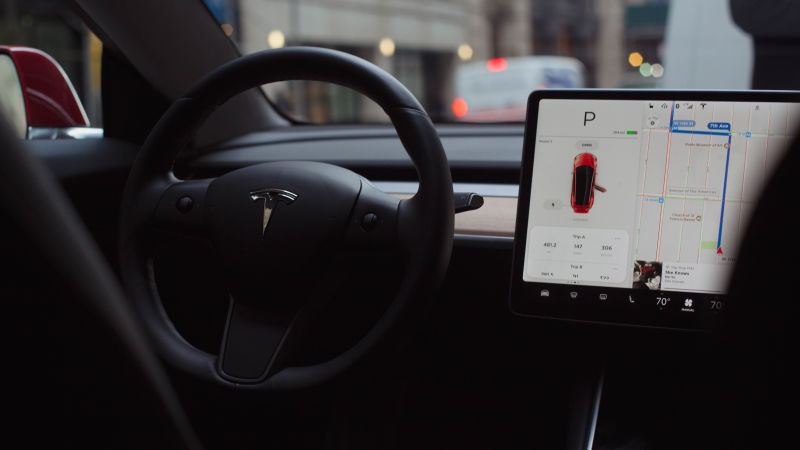
Tesla surprisingly announced on Thursday that a new mid-range option of Model 3 is now available, starting at $45,000. At the same time, the company quietly removed the capability to add the Full Self-Driving Capability package for $3,000 from Tesla’s online configurator. It’s a feature that should’ve never been offered in the first place.
Available since late 2016, Tesla has advertised the full-self driving option as an extension to the semi-autonomous Autopilot system that—in the company’s words—would allow owners to just “get in and tell your car where to go.” This, Tesla said, was contingent on regulatory approval, but in reality, it was contingent on the technology actually being vetted and, you know, working.
And that’s the thing: it’s not actually available. Many have long pointed out the obvious potential for stoking confusion in offering buyers a $3,000 option for something that doesn’t exist and no one knows if or when it ever will. By one report, more than 35,000 Tesla owners purchased the add-on, giving the company a nice $105 million cushion.
It’s a pretty curious look, especially following a number of high-profile crashes this year involving Tesla cars on Autopilot.
Advertisement
On Thursday, Tesla CEO Elon Musk appeared to concede the point, telling one of his follower’s on Twitter that the automaker has removed the option from the Tesla configurator, as it was “causing too much confusion.” You don’t say.
Asked for comment, a Tesla spokesperson deferred us to Musk’s tweet. It’s not as if Tesla’s removing the option entirely; it’ll still be available by request as an add-on, and all cars still come with what Tesla says is hardware that can handle fully-autonomous driving, and can be updated over-the-air, if and when that functionality becomes available.
Advertisement
Anytime Tesla has been faced with criticism about overselling the capabilities of Autopilot, something that customers claim continues to this day, the company demurs and insists that drivers are educated about what the system can do, and that they must pay attention at all times.
But if Musk is only now coming to the realization that offering something called Full Self-Driving Capability is causing some “confusion” among prospective buyers, it’s hard to see why. Here’s what Tesla’s website said about the $3,000 option:
Advertisement
(Hilariously, as Lee pointed out in a subsequent tweet, the last line of that passage about the Tesla Network, “details of which will be released next year,” has been on the automaker’s website … since 2016.)
Musk stirs up the pot, too. In June, he said “full self-driving features” were set to be introduced—a statement that many immediately misinterpreted and one Tesla never clarified to us. It’s easy to understand why some may’ve taken what Musk said to mean the full self-driving capability was introduced; he mentions “full self-driving” and on Tesla’s website, it described that feature as:
designed to be able to conduct short and long distance trips with no action required by the person in the driver’s seat. For Superchargers that have automatic charge connection enabled, you will not even need to plug in your vehicle.
Advertisement
Tesla already had to settle a lawsuit earlier this year over the rollout of the updated Autopilot. I’d charitably say that should’ve been a moment they realized the Full Self-Driving option needed to go, too. There’s no sign it’s coming any time soon, and the fact it kept it readily available to the public, in the face of regulatory and legal action, defies logic.
Coincidentally, the Tesla news came on the heels of a study published Thursday that found more than 70 percent of drivers across the world believe they can buy a fully-autonomous car today. I wonder how that could’ve ever happened.















